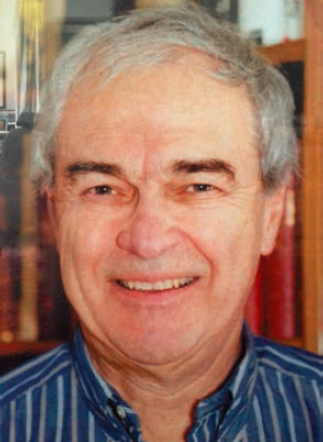
ROBERT K. GRASSELLI
1930–2018
Elected in 1995
“For the invention of catalysts and catalytic processes having commercial significance.”
ROBERT KARL GRASSELLI passed away in Munich, Germany, on January 11, 2018; he was 87 years old.
He was born June 7, 1930, in Celje, Slovenia. He began his scientific education at the Technical University of Graz in Austria, where he studied chemical engineering and was inspired by Prof. Gustav Franz Hüttig. In 1949 he was awarded a student council scholarship, relocated to the United States after having been displaced by the war from his family home, and entered Harvard University, where he earned his AB in chemistry in 1952.
He then joined Sohio in Cleveland as a junior chemist, ultimately rising to the position of science fellow and director of catalysis and solid state science, managing a group of 26 PhDs. He took advantage of the proximity to Case Western Reserve University to earn his MS (1955) and PhD (1959) in physical chemistry.
While at Sohio, he was instrumental in the discovery, development, and commercialization of a fundamentally new method of producing the polymer precursor acrylonitrile from propylene, ammonia, and air. Before this, acrylonitrile was produced using two highly hazardous and environmentally unfriendly materials, acetylene and hydrogen cyanide. The key innovation in this new one-step process was the use of
a bismuth molybdate catalyst. The Sohio acrylonitrile process was so effective that its worldwide adoption led to a 70-fold increase in acrylonitrile production and, in 1996, its designation by the American Chemical Society (ACS) as the 11th National Historic Chemical Landmark.
A highly accomplished and innovative scientist, Bob was renowned for his seminal contributions to the understanding, design, development, and commercial utilization of novel solid catalysis. He was an inventor on 175 US patents and authored more than 200 scientific publications in peer-reviewed international journals.
In 1985 he left Sohio to become director of the chemistry division at the US Office of Naval Research in Washington, where he administered 144 projects spanning many fields. Four years later he moved to Mobil Corporation’s Central Research Laboratory, as a research scientist and consultant.
In 1996 he began an academic career, as guest professor of physical chemistry at the University of Munich (1996–2006), adjunct professor of chemical engineering at the Center for Catalytic Science and Technology at the University of Delaware at Newark (1996–2018), and Distinguished Affiliated Professor at the Technical University of Munich (2006–18).
Bob’s contributions were recognized with a variety of honors. He was elected to the NAE (1995) and the Italian Academy of Sciences (2016). From the ACS he received the E.V. Murphree Award for Industrial and Engineering Chemistry (1984), Petroleum Chemistry Award (1990), and E.N. Morley Medal (1999; from the Cleveland branch). He was inducted into the Hall of Fame for Engineering, Science and Technology (HOFEST) in 1988.
He also shared the Distinguished Award in Oxidation Catalysis from the World Oxidation Catalysis Society in Berlin (2001). He was selected for the Alexander von Humboldt Prize (1995) and Germany’s Alexander von Humboldt Senior Scientist Award (2007).
In 1999 Bob established the Robert Karl Grasselli Foundation to sponsor symposia in selective oxidation catalysis. Since June 2000 these symposia, held in Irsee, Germany, have been
bringing together experts in the field for intensive discussions aimed at advancing catalytic and solid state science, with the proceedings published in the journal Topics in Catalysis. In addition, as a member of the board of trustees for the Gordon Research Conferences, he was instrumental in expanding them into Europe.
Bob’s research philosophy is well captured in his words from the 2016 Harvard Alumni Yearbook:
My strategy was to do fundamental research aimed at an understanding of the inner workings of our multifunctional, multimetallic oxide catalyst solids, so that we could alter the composition of the solid catalysts on a molecular scale and thereby enhance the efficiency of the catalytically active sites. In the course of these fundamental studies I proposed a working hypothesis which became known in the scientific world as the “7 pillars of oxidation catalysis” that I published and that have stood the test of time quite successfully. They are a general guide to catalyst research and towards the discovery of new catalysts.
Bob combined the best of the American optimism and “can-do” spirit with the old-world cultural depth and charm of the continent of his birth. He read extensively, and loved music and was an ardent supporter of the Cleveland Orchestra. He had a passion for skiing and for travel to faraway places. He also enjoyed fine automobiles, particularly Porsches; gardening; and modern art, especially that of Joan Miró.
Bob married Eva-Maria Hauck-Grasselli, MD, an expert anaesthesiologist, in 1989. For the last 20 years of his life they divided their time between their two homes, in Chadds Ford, Pennsylvania, and Munich. She succeeds him.
Bob will always be remembered for his enthusiasm for science, which led him throughout his life to advance his fields, and for his many close friendships.




